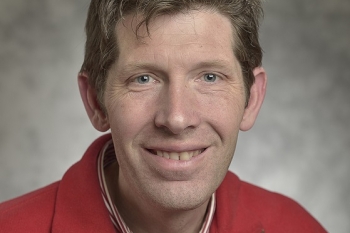
A heavy layer of air pollution, a mix of aerosol particles and vapors, obscures the view over Mexico City. Two studies by the Pacific Northwest National Laboratory show the importance of including the small-scale effects of aerosols in climate modeling. | Image courtesy of PNNL
Who knew a little dust made such a difference when it comes to climate change? Aerosols -- tiny particles like soot and dust — in our atmosphere can make a difference in weather, as well as climatic warming and cooling.
That’s why researchers funded by the Energy Department are studying those dusty aerosols and their effects on the atmosphere and climate. Recently, scientists at Pacific Northwest National Laboratory (PNNL) produced two new studies, both of which advance the accounting of aerosols, and could lead to improvements in global climate models.
The first study showed that overlooking the small-scale effects of aerosols can impact the accuracy of global climate projections. Aerosols can both absorb and reflect sunlight, thereby either heating things up or cooling them down. Their amounts and contents, and therefore effects, vary from region to region. However, based on our limited understanding of these regional differences – and the computing requirements to include them – researchers have tended to simply average those effects out.
However, PNNL researchers showed that such simplifications can lead to complications in the form of real errors in climate predictions. They compared global climate models against high resolution simulations of the aerosols over Mexico City, and found differences of up to 30 percent. Their study points to the importance of including small-scale effects into global climate models.
The second PNNL study did just that, showing scientists a way to follow the trail of aerosols in the air. Small-scale features such as clouds and aerosol particles have a large impact on global climate, but are not currently well represented in global models. So researchers at PNNL developed a computer model to more accurately track organic aerosols. They are the dusty bits that account for a good portion of pollution, coming as they do from the exhaust of vehicles, the emissions from power plants and the burning of plant material and trash. More realistic than the currently-used model, PNNL’s is simpler and more efficient, which makes it easier to use and run much faster. And in making their new model – and in comparing it to real-world measurements taken over and around Mexico City – the PNNL team also found that current climate models significantly underestimate the presence of aerosol particles.
Anyone whose fingers have been glued together while trying to assemble a replica of a plane or train knows that model making is an imperfect business. That’s especially true when it concerns a globe-sized model of the globe, and when some of the really important pieces are particles smaller than a grain of dust.
And that’s why scientists at PNNL and across the Office of Science are researching this. They’re dedicated to developing a better understanding of the effects of aerosols in our air; to the great and perhaps even climatic changes that could come from these tiny, dusty particles.
For more information about PNNL, go to: http://www.pnnl.gov/. And for more information on DOE’s Office of Science, please go to: http://science.energy.gov/.



